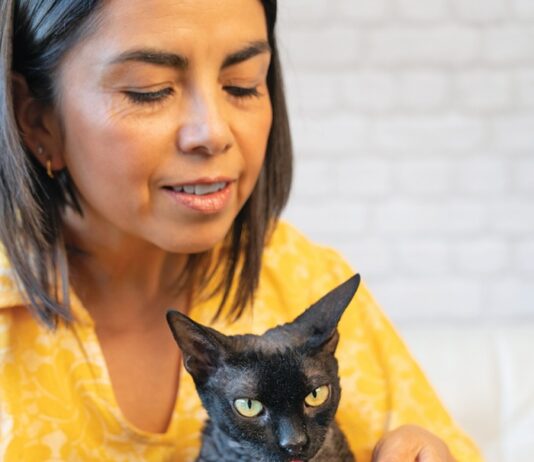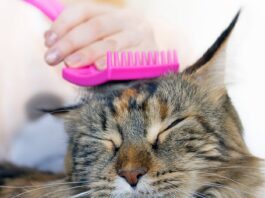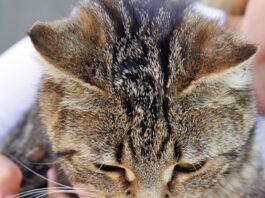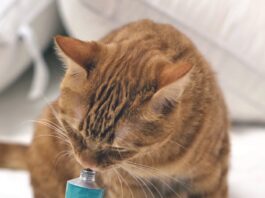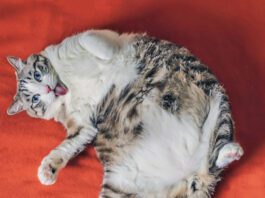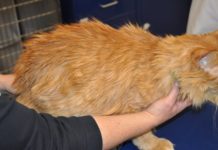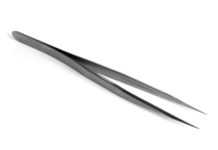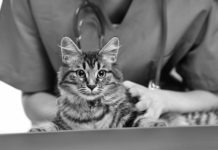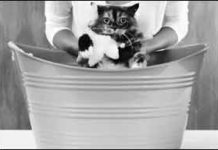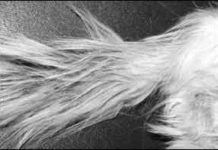The Deal With Oily Cat Fur
Your cat has always sported a shiny coat, soft to the touch. You marvel at the time he dedicates to grooming. But lately when you pet him, his coat feels greasy and you detect an odor. His grooming clearly is off, and its a worry.
Three Simple Tips To Tick Removal
Ticks can be found anywhere on a cats body but usually attach near the head, neck, ears and feet. If you discover one, remove it as soon after attachment as possible, says Meryl Littman, VMD, ACVIM, at the University of Pennsylvania. Do not cover the tick with Vaseline, gasoline or anything else beforehand. And do not remove it with your bare hands - a crushed ticks bacteria could get into your cuticles and infect you.
When Theres Hair, Hair Everywhere
If clouds of cat hair dont complement you, your furniture or your home, you may be among the owners looking for solutions to shedding. Dermatologist William H. Miller, VMD, Medical Director of the Cornell University Companion Animal Hospital, has a simple two-step prescription to tame it: a brush and a vacuum.Shedding is a normal function. However, Dr. Miller offers this cautionary advice: If your cats shedding appears to be unusually heavy or results in bald spots, make a veterinary appointment to determine if he has an underlying medical condition. High fevers, allergies, the hormonal imbalance hyperthyroidism, pregnancy and parasites like fleas and ticks can cause a cat to shed excessively.
The Common Cause of Ear Infections
One common reason for veterinary visits among cats is otitis externa, or inflammation of the external ear canal. Most people believe that that the term otitis externa means an ear infection, but that isnt true. Something has to breech the normal defense mechanism of the ear to trigger the infection, says veterinary dermatologist William H. Miller, Jr., VMD, Medical Director of the Cornell University Hospital for Animals. Once the surface of the ear canal is damaged, bacteria or yeast inside and around the canal can cause an infection. The underlying causes can include tumors, allergies, ticks or fleas, and excessive grooming and ear wax. But by far the most frequent cause in cats, especially kittens, is ear mites.
The Truth About Litter Box Aversion
Thinking outside the box has become a clich, but its still a praiseworthy trait. When your cat eliminates outside the litter box, however, its a problem. House soiling - urination or defecation any place other than in a litter box - is a major reason that owners surrender their cats to shelters. Cats dont avoid the box because theyre being spiteful. Theyre raising an alarm. Cats who eliminate outside the litter box are communicating to their owners that something is wrong, either with a specific aspect of their box, their health or relationship with another member of the household - feline or human, says Pamela Perry, DVM, Ph.D., a lecturer in animal behavior at Cornell University College of Veterinary Medicine. It is the most commonly reported feline behavior complaint to veterinary behaviorists.
Ask Elizabeth: December 2014
Q. I have two cats, a 15-year-old, 6-pound domestic calico with mid-length hair and a 7-year-old, 8-pound part-Himalayan, also with mid-length hair. Both have developed matted hair on both sides of their hindquarters. I was able to shave the calicos off and the hair grew back OK. The big cat wont let me shave him. What causes these mats?
Ask Elizabeth: November 2014
Q. Our year-old male cat, found at a county animal shelter seven months ago, has been diagnosed with eosinophilic granuloma complex (EGC). His symptoms are incessant scratching, puffy gums, blistering mouth, swollen front paw, lameness, limping. Our veterinarian has prescribed steroids for him, and these have been somewhat helpful, but can you explain this disease so that we can better understand what is going on? …
Whats Your Cats Age in Human Years?
If there were an AARP for pets, your cat would get his membership card when he turns 8. Thats about 50 years old in human years, according to Feline Life Stage Guidelines from the American Association of Feline Practitioners and American Animal Hospital Association.
Seven Common Grooming Mistakes
Cats enjoy a reputation for being stellar self-groomers, but they reap enhanced health benefits by having their nails trimmed, their coats brushed and, yes, even receiving the occasional bath. To ensure successful at-home grooming, Hayley Keyes, Executive Director of the International Professional Groomers, Inc. and an international master certified professional cat groomer, shares seven tactics to avoid common mistakes. “There are different techniques when it comes to brushing and bathing a cat versus a dog,” says Keyes, who operates the Nanhall Pet Spa/School of Grooming in Greensboro, N.C. “But the bottom line is that you want these grooming times to be safe and stress free for the both of you.”
Supracaudal Gland Hyperplasia
In teenagers, the sebaceous glands contribute to the development of acne. In cats, these glands can cause a similar problem at the base of the tail, an accumulation of scale (flakes) and yellow-to-black waxy debris (blackheads) along the dorsal, or top, surface of the tail. Although it can affect any cat who doesn’t groom the tail, the condition was once thought to affect only intact male cats, hence the name stud tail, says dermatologist William H. Miller, Jr., VMD, Medical Director of the Cornell University Hospital for Animals.Medically, the condition is known as supracaudal gland hyperplasia or tail gland hyperplasia. It’s caused by hypersecretion of the glands in the supracaudal organ on the base of the tail.
Enhance Healing at Home or the Clinic
Don’t expect your cat to come to you with pleading eyes to book a veterinary appointment when he’s not feeling well. That’s because cats have a validated reputation for being both prey and predator. They’ll do their best not to let anyone know they’re injured or ailing. It’s a survival mindset.
A Commitment to Improving Well-being
Imagine veterinarians being able to sterilize feral cats by vaccination instead of surgery. Or to identify the connection between a relatively benign form of feline coronavirus and feline infectious peritonitis, which is nearly always fatal, with the hope of finding ways to diagnose and combat it. Or discover how and why vaccine-associated sarcomas may trigger DNA damage in some cats and how this damage may be used to predict which cases of the sarcomas are amenable to chemotherapy. These are just three of the many scientific studies funded by the Cornell Feline Health Center where, under the guidance of Director Colin Parrish, Ph.D., Professor of Virology, the goal of bettering the health of cats continues to be the focus and commitment, as it has been since the center opened its doors in 1974.

